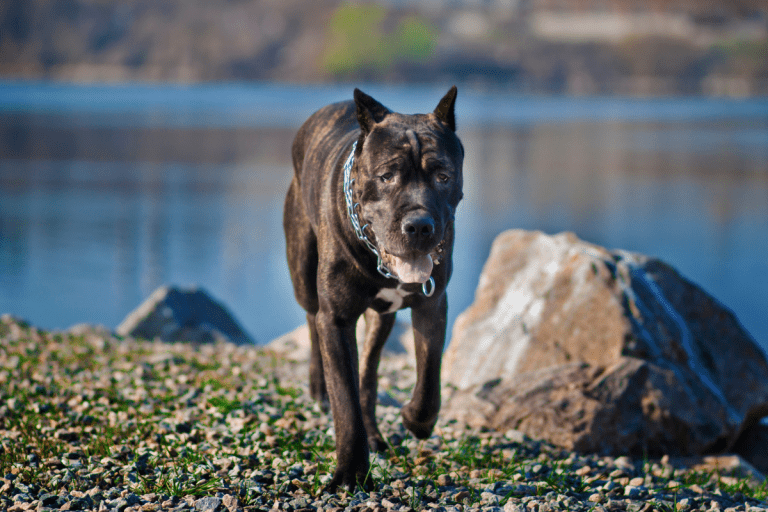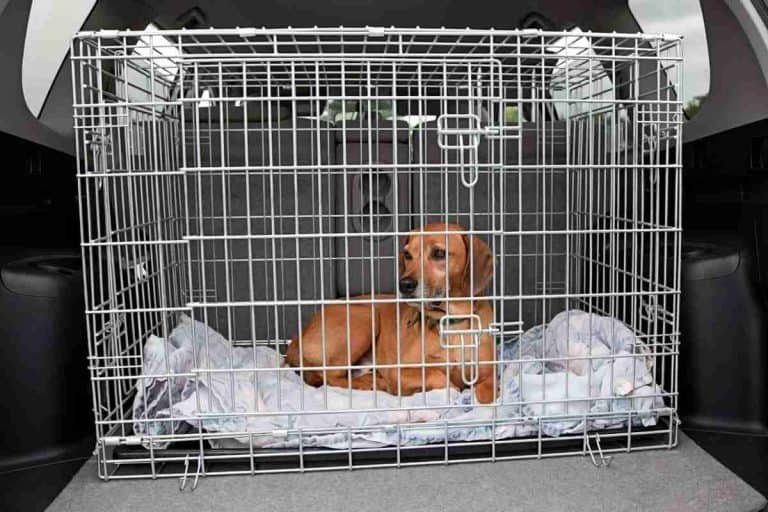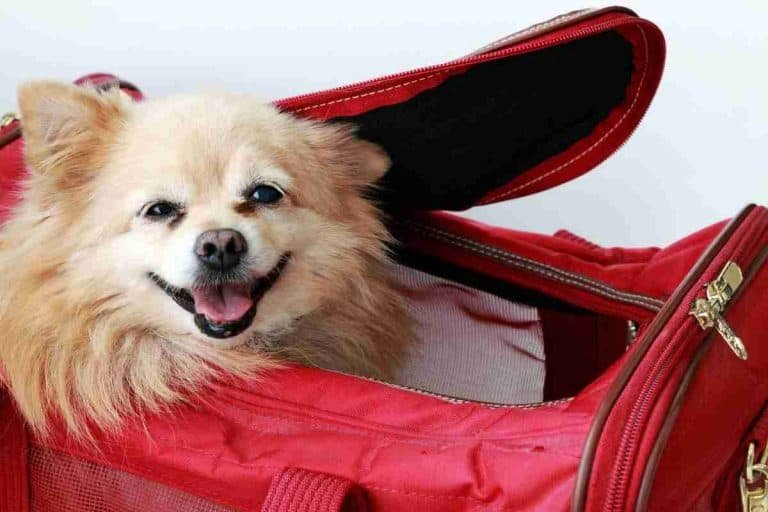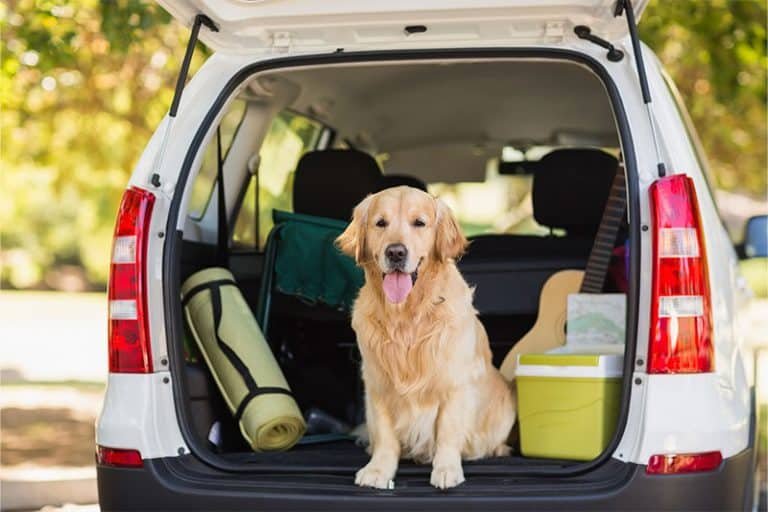Can Large Dogs Fly in the Cabin? Airlines That Allow Big Dogs and What You Need to Know
Last Updated on October 21, 2025
Can large dogs fly in the cabin? Usually not on commercial flights that require an under‑seat carrier. Exceptions include trained service dogs, narrow ESA policies, and rare extra‑seat programs. Approval depends on aircraft, route, paperwork, and behavior. Some airlines that allow big dogs apply strict documentation and seating rules.
Key details to check include under‑seat dimensions, weight limits, fees, and health certificates. Also crucial: gate‑agent discretion, international entry rules, and breed restrictions. When cabins aren’t viable, options include checked or manifest cargo and pet‑focused charters. Preparation—carrier selection, crate training, and paperwork—reduces stress and improves approval odds.
Quick verdict: can large dogs fly in the cabin?
Most commercial airlines do not allow large dogs to travel in the cabin when they exceed the under‑seat carrier dimensions set by the carrier. Exceptions exist, but they require specific conditions and paperwork. Service dogs trained to perform tasks fly in the cabin regardless of size under U.S. and many international rules, though recent airline policy shifts have tightened documentation and behavior expectations.
Emotional support animals (ESAs) no longer receive broad cabin privileges from many major carriers. Some airlines permit large dogs if the passenger buys an extra seat and the dog remains restrained on that seat, or if an airline offers an “extra‑large carrier” exception on certain aircraft. Approval often depends on the aircraft type, route, and seat availability.
Travelers should review which breeds and sizes typically qualify and prepare alternate plans if the airline denies cabin transport. For practical examples of breeds commonly accepted and those usually excluded, see dogs you can take on a plane.
When in‑cabin travel is permitted (service dogs, select ESAs, extra‑seat or carrier exceptions)
Airlines allow large dogs in the cabin primarily in four scenarios: service dogs, narrowly defined ESAs under older or limited airline policies, a purchased extra seat, or a special carrier/seat exception offered on some flights. Service dogs with proper documentation and clear task training generally board as carry‑ons, though airlines may still require advance notice and behavior verification.
ESA allowances vary. Since many carriers rescinded broad ESA policies, acceptance now depends on the airline’s remaining guidelines and medical paperwork. Passengers seeking ESA approval must check current forms and submission windows long before travel.
Buying an extra seat gives a reliable path for larger pets. Airlines expect the dog to sit on the seat, remain harnessed or contained, and not impede emergency egress. Some carriers allow oversized soft‑sided carriers on certain aircraft rows; others permit gate agents to authorize exceptions for wide‑body planes.
Before booking, call the airline to confirm available options and required forms. For additional operational tips about handling noisy or anxious pets during flights, consult what happens if my dog barks on a plane.
Typical commercial rules (fit‑under‑seat requirement, common weight/size thresholds)
Most carriers enforce a strict fit‑under‑seat rule: the pet plus carrier must slide completely under the seat in front. Typical carrier dimensions range roughly 17–19 inches long, 11–13 inches high, and 10–12 inches wide for domestic U.S. flights. Airlines publish exact measurements; passengers should measure both carrier and seat pitch before booking.
Weight and size thresholds vary. Some low‑cost and regional carriers use a combined weight limit (dog plus carrier) often around 15–20 pounds. Legacy carriers sometimes allow larger combined weights but still require under‑seat fit. Hard‑sided crates rarely qualify for cabin stowage.
Fees apply per pet and vary by airline and route. Expect separate charges for in‑cabin pets and additional fees for international travel. Airlines also require up‑to‑date vaccinations and sometimes a recent health certificate for entry into specific countries.
When planning, measure the dog in a relaxed standing position and test the carrier for comfort. For guidance on breeds and sizing that commonly fit cabin requirements, view dog breeds that fit under airplane seat.
How regional rules and gate‑agent discretion affect approval
Regional regulations and gate‑agent judgment significantly influence whether a large dog boards the cabin. Domestic rules, international entry requirements, and airline policy combine to create varied outcomes. For example, some countries ban certain breeds or require quarantine, while others allow larger service animals with specific certification.
Gate agents hold practical authority at boarding. They evaluate the actual carrier fit, the dog’s behavior, and cabin safety. Even with prior approval, an agent can deny cabin entry if the carrier won’t stow safely or if the animal displays aggressive or highly disruptive behavior.
To reduce gate‑time refusals, passengers should: arrive early, bring printed approvals and health paperwork, premeasure seat space, and use a carrier clearly labeled with contact and medical details. If a gate agent raises concerns, ask to escalate to a supervisor and present alternative solutions, such as purchasing an extra seat or rerouting on a suitable aircraft.
For international trips, confirm destination entry rules weeks ahead and plan cargo or ground travel backups if cabin carriage becomes impossible. A proactive call to the airline the day before travel often prevents last‑minute surprises. CTA: contact the airline’s accessibility or pet travel desk immediately after booking to lock in any special permissions.
How commercial airlines handle bigger dogs
Airlines approach large dogs in two basic ways: allow only small pets in the cabin or require larger animals to travel as checked baggage or manifest cargo. The question Can Large Dogs Fly in the Cabin? Airlines That Allow Big Dogs and What You Need to Know often resolves to whether the dog fits under the seat and meets the carrier’s weight and carrier-dimension rules. Airlines set strict under-seat dimensions and maximum combined pet-plus-carrier weights. If a dog cannot fit, it usually moves to the belly of the aircraft as checked baggage or to a climate-controlled cargo hold as manifest cargo. Cargo travel includes additional steps: advance reservations, rigid airline-approved crates, veterinary certificates, and seasonal embargoes when temperatures pose risks.
Fees, booking windows, and age or health restrictions differ by carrier. Some routes, especially international ones, add import permits and quarantine requirements. Travelers should also consider charter or private flights, which sometimes permit larger dogs in the cabin under negotiated terms. For guidance on cargo versus cabin options and how airlines commonly treat larger pets, consult resources about airlines that allow dogs in the cargo.
Service‑dog rules — U.S. DOT/ADA protections and international differences
Trained service dogs receive legal protections that normally allow cabin travel, even when the animal is large. In the United States, the Department of Transportation and the Americans with Disabilities Act recognize service animals that perform specific tasks for a person with a disability. Airlines may request documentation and advance notice, and they can refuse animals that pose a safety or sanitation risk or show disruptive behavior.
Internationally, rules vary. Many countries recognize service dogs but require advance paperwork: health certificates, updated vaccinations, and sometimes import permits. Carriers flying between jurisdictions must comply with both the departure and destination rules. Airlines also apply behavioral standards; a dog that is aggressive or repeatedly disruptive can be denied carriage regardless of service status. For practical behavior-related concerns and how airlines handle disruptive animals midflight, see guidance on what happens if a dog barks on a plane.
Emotional support animals today — which carriers and regions still allow them
Emotional support animals (ESAs) lost federal protections on many major U.S. carriers after policy changes that narrowed the definition of service animals. Most large U.S. airlines now treat ESAs as pets, not service animals, so ESAs must follow standard pet-in-cabin or cargo rules. Some smaller or regional carriers may still accept ESAs under specific conditions, but those cases are increasingly rare.
Outside the U.S., many countries also treat ESAs as regular pets and require standard pet documentation and compliance with carrier size limits. Travelers seeking cabin access for a support animal should confirm whether the animal qualifies as a trained psychiatric service dog under carrier and destination rules. For examples of which dogs commonly travel in cabins and what counts as acceptable carry-on pets, refer to resources about dogs you can take on a plane.
Notable commercial exceptions and policies to verify before booking (examples and what to ask)
Airline policies contain many exceptions. Before booking, verify the following specifics directly with the carrier and get confirmation in writing when possible:
- Under-seat dimensions and maximum carrier weight — measure the closed carrier with the dog inside.
- Maximum pet weight for in-cabin travel — some carriers set strict combined weight limits.
- Breed restrictions — brachycephalic and certain working-breed bans may apply.
- Crate and labeling requirements — required for checked or cargo travel.
- Health paperwork and timeframe — veterinary certificates, rabies vaccine window, and international permits.
- Temperature or seasonal embargoes — airlines may refuse cargo travel during extreme heat or cold.
- Check-in deadlines and routing limits — some airports or aircraft types prohibit pets.
Ask explicitly: “Will my dog travel in-cabin or as cargo?” and “What exact dimensions and documentation do you require?” Also inquire about extra fees and what happens if a flight changes equipment. For carriers that make exceptions for short-snouted breeds, check their specific policies, such as those covering airlines that allow snub-nosed dogs. Travelers should call the airline, follow up with an email, and arrive with printed confirmation.
Private, semi‑private and pet‑focused flight options
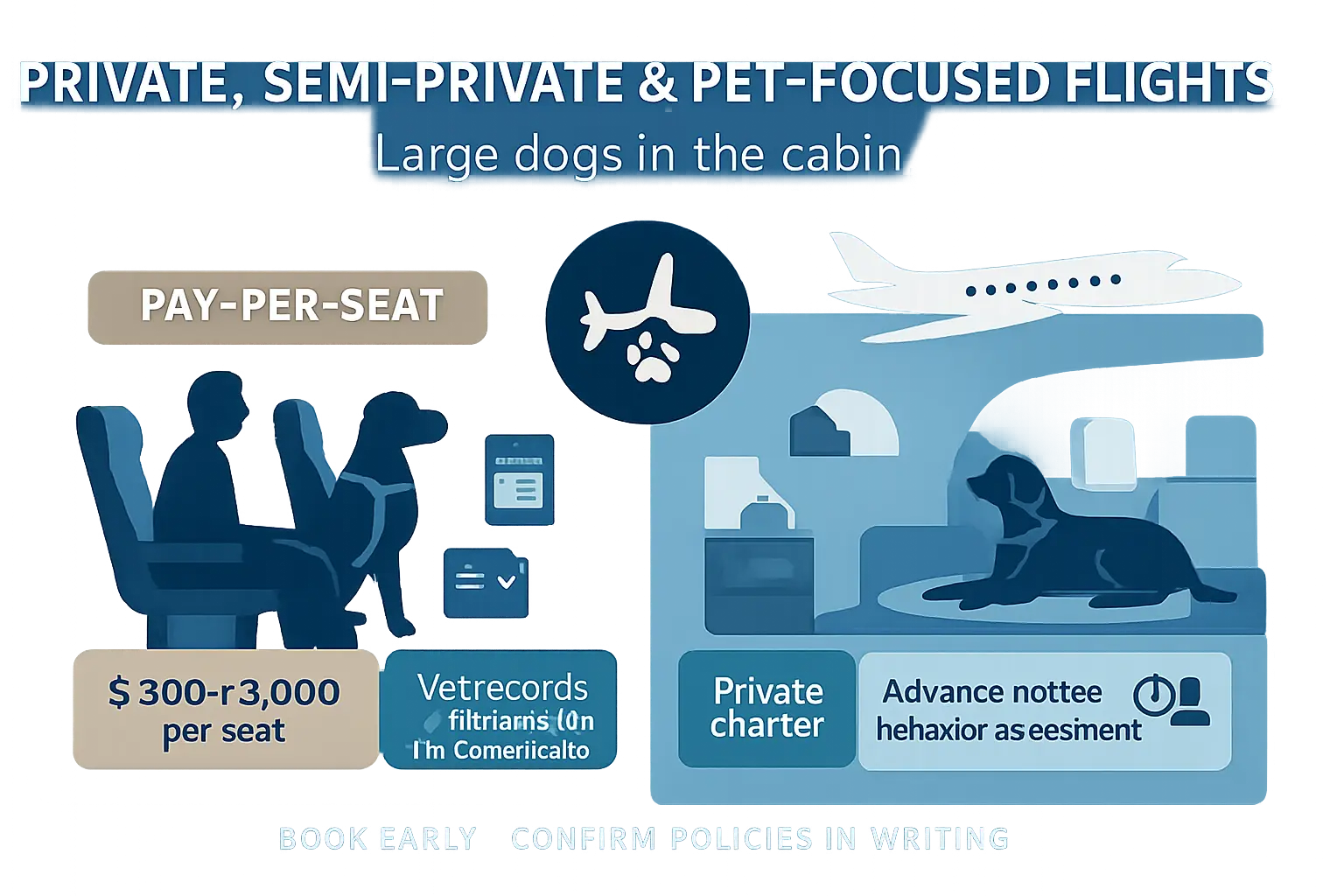
Pay‑per‑seat pet flights and specialist services (how they work)
Pay‑per‑seat pet flights sell individual passenger seats to pet owners on charters or adapted commuter routes. Operators reserve a cabin row or cabin section for animals. Staff vet booking requests for size, temperament and paperwork. Owners usually submit vaccination records, proof of ID and a fitness‑to‑fly certificate for large breeds. These services cater to pets that exceed airline in‑cabin size limits but remain calmer in a cabin environment. For guidance on which breeds typically meet cabin rules, see dogs you can take on a plane.
Private jet charters and brokers that allow large dogs in cabin
Private jets remove most commercial size restrictions. Brokers list aircraft that accept large dogs in the cabin and outline owner responsibilities. Operators require advance notice, crate dimensions for takeoff and landing, and sometimes a preflight behavior assessment. Charter platforms permit filtering for pet‑friendly flights and provide door‑to‑door options. Brokers can also arrange ground handling, pet concierge services and on‑board amenities like familiar bedding.
Advantages, limitations and typical price ranges
Advantages include reduced stress for the dog, controlled cabin conditions and fewer transfer points. Limitations include stricter preflight requirements, variable breed acceptance and limited availability on short notice. Pay‑per‑seat charters commonly cost several hundred to a few thousand dollars per seat, depending on route and demand. Private jet charters typically start in the low thousands per hour and rise with aircraft size and extras. Owners should compare total trip costs, cancellation terms and required paperwork before booking. Book early and confirm pet policies in writing to avoid last‑minute refusals.
When cabin isn’t an option: cargo and freight transport
When an aircraft’s cabin can’t accommodate a large dog, airlines move animals through cargo or freight systems. These options include checked‑as‑baggage (some carriers still call it that), airline cargo departments (manifest cargo), and third‑party live‑animal freight forwarders. Each path changes who accepts responsibility, how the dog is handled, and the paperwork required.
Cargo travel usually requires a reservation with the airline’s cargo desk or an approved forwarder. Carriers may require a health certificate issued within 10 days of travel, proof of vaccinations, and microchip details. Fees vary widely and can exceed in‑cabin pet charges, especially for international freight. Airlines also publish size and weight limits, and some only accept live animals on certain aircraft or routes.
Shippers should confirm pickup and delivery procedures. Cargo pickups often occur at separate terminals or cargo facilities. Ground handling times add to total travel time. For an overview of which carriers handle animals via cargo, see airlines that allow dogs in the cargo.
Differences between checked‑as‑baggage and cargo freight bookings
Checked‑as‑baggage and cargo freight differ in liability, handling, and scheduling. Checked‑as‑baggage treats the crate like luggage, booked on a passenger reservation. The airline usually accepts it at the check‑in counter and delivers it with regular baggage at arrival. Cargo freight goes through the airline’s cargo division or a freight forwarder. The cargo route offers more flexible size and weight options and often better tracking.
Liability also changes: cargo departments follow live‑animal procedures and maintain manifest records. They may provide climate‑controlled storage and more frequent welfare checks. Checked baggage can expose pets to faster transfer times but less specialized handling. Fees often differ: cargo is typically pricier but sometimes necessary for very large or heavy crates.
Booking timelines vary. Cargo spaces fill earlier, requiring advance reservations. Ground pickup and release rules differ, so owners must confirm arrival windows and identification requirements. For policy consequences of in‑flight issues like barking and delays, consult practical airline guidance such as what happens if my dog barks on a plane.
IATA‑compliant crate requirements and airline variations
The International Air Transport Association (IATA) sets baseline crate rules in its Live Animals Regulations. Airlines expect rigid crates that meet IATA dimensions, provide ventilation on three sides, and use secure, chew‑resistant fasteners. Crates should allow the dog to stand, turn, and lie naturally.
Key crate features include solid, leak‑proof floors; ventilation panels; a secure metal door with a spring latch; and clear food and water containers accessible from outside. Labels must display live‑animal warnings, orientation arrows, and contact details. Soft‑sided carriers seldom meet cargo requirements and typically remain limited to in‑cabin use only.
Airlines then add variations. Some specify wood or plastic construction, others require specific airflow openings or pad thickness. International routes sometimes demand extra reinforcement. Owners should measure the dog, then select a crate model that leaves at least 10% extra interior space. For a starting point when choosing durable travel containers, see best dog crates for car travel in 2023.
Breed, seasonal and aircraft restrictions that affect cargo travel
Not all dogs qualify for cargo travel. Many airlines ban or restrict brachycephalic breeds because they struggle with heat, stress, and pressure changes. Carriers maintain lists of prohibited or conditionally accepted breeds and often treat snub‑nosed dogs differently from other breeds.
Seasonal embargoes also apply. Airlines impose heat or cold embargoes when extreme temperatures threaten animal welfare. Those embargoes can affect routes to or from hot regions during summer and cold climates in winter. Wide‑body aircraft with climate‑controlled lower holds sometimes remain available when narrow‑body planes do not.
Route type matters. Nonstop long‑haul flights can reduce transfer stress, while multiple connections increase handling events. Owners should confirm breed policies, seasonal blocks, and the aircraft scheduled for their flight. See carrier‑specific guidance for snub‑nosed dogs at airlines that allow snub-nosed dogs.
Practical steps to reduce stress and improve safety in cargo
Preparation reduces risk and stress. Start crate training weeks ahead. Short, positive sessions help the dog accept the crate as a safe space. Practice loading and unloading until the dog remains calm. Schedule exercise and a light meal several hours before travel to avoid nausea.
Prepare paperwork: up‑to‑date vaccinations, a recent health certificate, and clear ID tags. Apply a secure temporary label with the dog’s name, destination, and owner phone number. Avoid sedatives unless a veterinarian recommends a specific, safe protocol.
On travel day, attach absorbent bedding, secure water dispensers, and include a familiar item with scent. Notify the airline’s cargo desk on arrival and confirm where to collect the animal. For behavioral and calming techniques to help the dog before travel, review resources like 9 natural ways to remedy your dogs travel anxiety. Owners should confirm carrier policies and book cargo space early to secure appropriate routing and handling.
International travel requirements and timing

International travel with a large dog demands planning months ahead. Rules combine airline carrier policies and the destination country’s import regulations. Airlines may reject oversized pets from cabin travel, so verify carrier size and weight limits early. Embassies, consulates, or the destination’s agriculture authority list required documents and quarantine rules. Many countries mandate an ISO microchip, up-to-date rabies vaccination, and a recent health certificate issued within a narrow window before travel. Some destinations require a rabies antibody titer test; others need additional vaccines or parasite treatments.
Start the process at least three months before travel for routine requirements. For complex cases, like titer tests or countries with strict bans, allow six months. Book flights with connections that minimize total travel time and avoid extreme temperatures. Contact the airline and the destination authority to confirm timelines and whether the airline permits large breeds in cabin or requires cargo travel. For practical packing and on-the-ground tips for moving a pet, consult essential dog travel tips and gear for road trips. A small investment in time now prevents costly hold-ups later.
Core documents (health certificate, microchip, rabies vaccine, titer tests)
Prepare core documents precisely as the destination requires. Typical essentials include:
- ISO microchip: implanted and scannable; if not ISO, carry your own scanner or an endorsed certificate.
- Rabies vaccine: administered after microchip placement and within the valid period specified by the importing country.
- Health certificate: an accredited veterinarian issues this within a specific timeframe before travel.
- Rabies titer test: required by some countries to confirm adequate antibody levels; testing labs need lead time.
Keep originals and clear scanned backups. Ensure the health certificate uses the correct national form—some countries accept the USDA APHIS form; others require a different endorsement. Mistakes in dates, vaccine lot numbers, or signature blocks cause delays at departure or arrival. Review airline documentation rules too, since carriers may ask for proof before boarding. For an overview of which dogs usually travel by air and associated paperwork, see dogs you can take on a plane. Store paperwork in an accessible folder for airport inspections.
Import/export permits, endorsements and lead times to plan for
Import and export permits add complexity and time. Many countries require import permits issued before arrival. Export endorsements often come from a national veterinary authority. For U.S. departures, the USDA APHIS endorsement process can take days to weeks depending on workload. Other countries use similar endorsement systems; check the specific lead times.
Plan these steps:
- Identify whether the destination requires an import permit or special entry form.
- Request export endorsements from the home-country veterinary authority well in advance.
- Allow time for lab results if the destination requires titers or pathogen tests.
- Factor in courier time for certified documents; some endorsements must be mailed physically.
Account for seasonal surges that lengthen processing times, such as summer holidays or agricultural shut-downs. If the airline will carry the dog in cargo, confirm its documentation requirements, which sometimes differ from cabin rules. For carrier-related options and timelines, review resources about airlines that allow dogs in the cargo. Apply for permits early and track each step until authorities confirm approval.
Arrival, customs inspections and layover/transit considerations
On arrival, customs inspects documents and the dog. Officials verify microchip scans, vaccination dates, and health certificates. If paperwork or documentation lacks required endorsements, inspectors may quarantine the animal or deny entry. Airports often require advance notice for pet arrivals to arrange inspections and clearance.
Transit rules vary by country. Some transit points treat the dog as in-transit and impose minimal checks. Others require full import clearance even during layovers longer than a specified time. When booking connections, prefer single-ticket itineraries that minimize separate check-ins. Allow extra layover time to account for inspections and unexpected delays.
Plan for the dog’s immediate needs during layovers. Long waits cause stress and accidents. Identify airport pet relief areas and carry absorbent pads, water, and a leash. For managing bathroom needs in flight and during connections, see practical advice at how do dogs go to the bathroom on a plane. Always present a complete document packet at immigration and customs. That reduces inspection time and lowers the risk of quarantine or refusal.
Preparing your large dog for air travel
Preparing a large dog for air travel requires planning across paperwork, equipment and the dog’s physical readiness. Owners must confirm airline policies on weight, breed restrictions and cabin allowances before booking. Many carriers restrict cabin travel to dogs that fit under the seat; larger dogs usually travel as checked cargo or via specialty pet services. Obtain any required health certificate and vaccination records within the airline’s timeframe, and verify breed-specific rules, especially for brachycephalic dogs. Factor in extra costs such as oversized carrier fees and help with airport handling.
Pack a travel kit with a sturdy leash, absorbent pads, bottled water, a favorite toy and printed health documents. Schedule a vet visit 7–10 days before departure to get clearance and discuss any temperament or medical concerns. For practical, vehicle-based practice and gear ideas, consult these essential dog travel tips and gear for road trips.
CTA: Contact the airline and a veterinarian early to confirm rules and timelines before finalizing travel.
Choosing an airline‑approved carrier or seat‑compatible crate
Select a carrier that meets the airline’s published dimensions and safety rules. For cabin travel, measure the under‑seat space on the specific aircraft and choose a carrier that allows the dog to stand, turn and lie down comfortably. Soft‑sided carriers compress to fit tighter spaces but need reinforced bottoms and spill‑proof liners. Hard crates offer more protection but often don’t fit under seats and may require cargo transport.
Look for carriers with secure zippers, breathable mesh on multiple sides and tie‑down points to anchor the crate in a vehicle or an airline-approved restraint. For owners deciding between styles and sizes, product reviews and travel crate comparisons help narrow choices; see this guide to the best dog crates for car travel for features to prioritize.
Crate training, exercise, feeding and pre‑flight vet checks
Begin crate training well before travel. Introduce the carrier as a safe space, use high‑value treats, and progressively increase time inside. Pair crate sessions with short car rides, then longer drives, to build tolerance for movement and confinement. Exercise the dog thoroughly on travel day to reduce anxiety and restlessness.
Adjust feeding so the dog has a light meal 4–6 hours before departure, reducing the chance of nausea. Offer small amounts of water up until boarding but avoid overhydration. Schedule a comprehensive vet check to confirm the dog is fit to fly, update vaccinations, and request any required health certificates. For handling and safe lifting techniques when training or moving a large dog, review this practical guide on safely lifting a large dog into a car.
Medication, calming aids and what to test before travel
Veterinarians generally advise against routine sedatives for air travel, because they can alter breathing and temperature regulation. Instead, discuss targeted options with the vet for any medical anxieties. Non‑sedative choices include short courses of prescribed anti‑anxiety medication, but only after trialing these drugs well before travel.
Owners should test calming aids at home and on car trips. Try pheromone sprays, calming wraps, noise‑masking devices, and natural remedies under supervision. Monitor for side effects and adjust dosages only on veterinary advice. Perform at least one full practice run: crate the dog with chosen aids, travel by car for an hour, and observe behavior and appetite. For natural calming strategies and techniques to reduce travel stress, see the tips on natural ways to remedy dogs’ travel anxiety.
Costs, booking strategy and practical alternatives
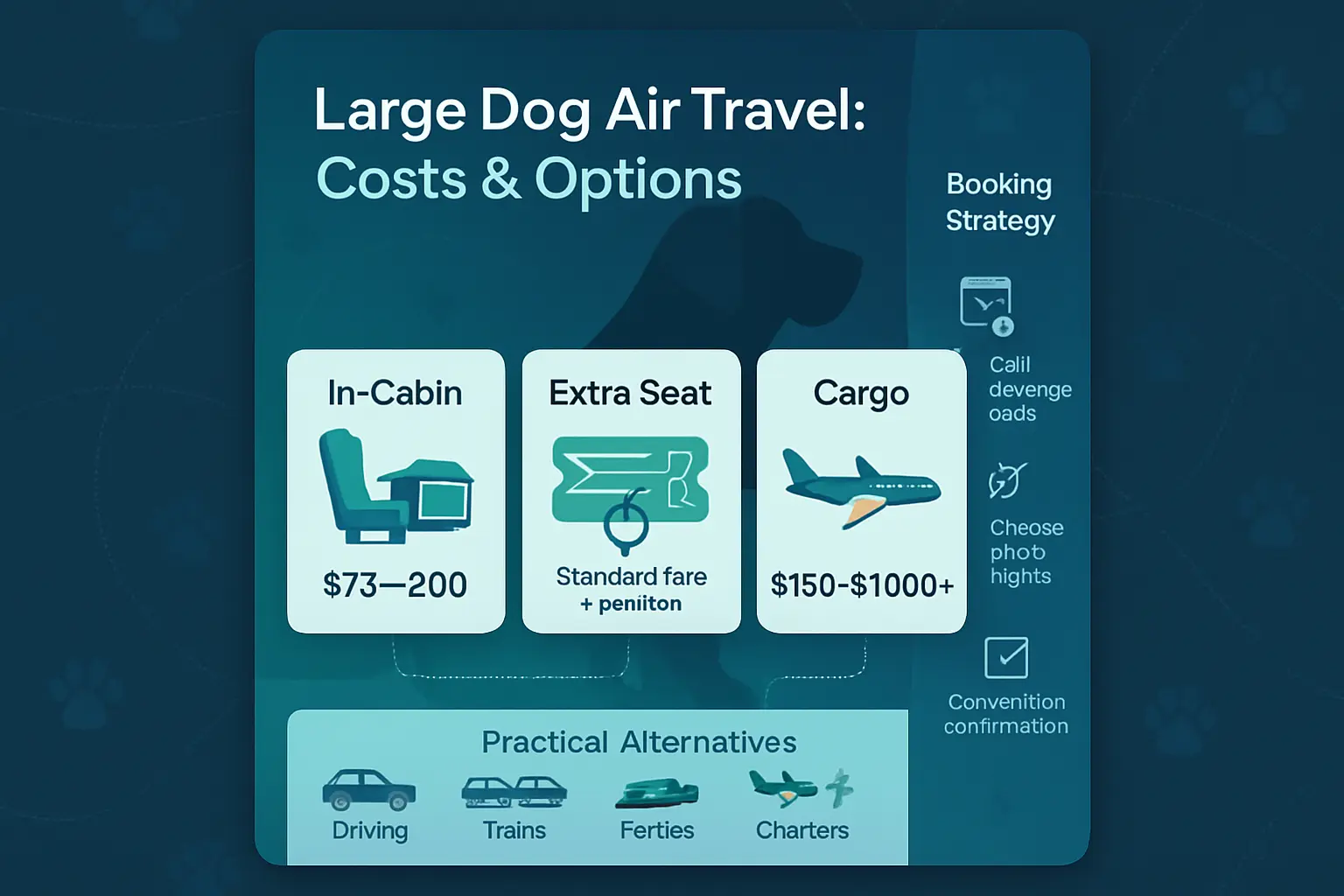
Pet owners should expect wide cost and policy variation when transporting large dogs. Airlines limit in‑cabin size and weight, allow extra‑seat travel rarely, and usually consign oversized animals to cargo or charter services. Budgeting, early planning and paperwork reduce surprises.
Typical fees for in‑cabin, extra‑seat and cargo options
In‑cabin fees for approved small pets range from about $75 to $200 domestically. When an airline allows a dog in an extra seat, fares typically equal a standard passenger fare plus any pet surcharge, often several hundred dollars. Checked‑or‑live‑animal cargo fees vary by carrier and route and can run from about $150 to well over $1,000 for large breeds, plus crate costs. Crate purchase, vet certificates, microchipping and temperature‑restriction surcharges add to the total. International moves add import/export fees and quarantine expenses. Always confirm exact weight limits, crate dimension rules and seasonal restrictions before booking.
Best booking tactics (reserve early, call cargo/charter desks, confirm seat/space)
Reserve as early as possible; most carriers cap animal spots per flight. Call the airline’s pet or cargo desk to secure and document a reservation rather than relying on online forms. Ask about aircraft type, available space, and any breed restrictions. Choose direct flights and off‑peak times to limit handling. Get written confirmation of the pet fare and placement, and verify required health paperwork and carrier specs. For high‑risk or oversize pets, request cargo or charter options and compare quotes from specialist pet transporters.
Alternatives to flying (driving, trains, ferries, pet‑friendly cruises)
Overland travel often proves safer and cheaper for large dogs. Driving gives control over stops, climate and handling, and reduces stress and crate needs. Trains offer a calmer option on selected routes; see practical tips for train travel with dogs at traveling with your dog by train: tips and tricks. Ferries and many pet‑friendly cruises accept larger animals but require reservations and health documents. For long international moves, consider professional pet relocation or a dedicated cargo charter. Contact providers early and compare total costs, timelines and risk profiles before booking.
Call the carrier or a pet transport specialist to confirm rules and lock in a safe option.
Frequently asked questions
Below are concise, practical answers to the most common concerns owners have about flying with large dogs. Each response highlights airline rules, paperwork, and safety steps owners should confirm before booking.
Can I buy a seat for my large dog?
Most major carriers require pets to travel inside an airline-approved carrier that fits under the seat. Buying a passenger seat for a dog rarely overrides that rule. A few smaller or charter airlines may permit a dog to occupy a purchased seat if the carrier fits and the airline explicitly allows it.
Steps owners should take:
- Contact the airline well before booking to ask about seat purchase options and any size exceptions.
- Confirm carrier dimensions and whether the airline accepts carriers on a seat.
- Reserve the pet spot; airlines limit cabin pet numbers and use a first-come policy.
- Prepare required paperwork and pay the pet fee at booking or check-in.
For examples of breeds and cabin rules, see the guide on dogs you can take on a plane. Owners should treat a seat purchase as exceptional and always get written confirmation from the airline.
What is the largest dog allowed in the cabin?
Airlines set cabin limits by carrier and carrier dimensions rather than breed. The effective maximum is the largest dog that comfortably fits in an approved carrier placed under the passenger seat. Typical limits focus on carrier external dimensions and sometimes combined weight of pet plus carrier.
Practical points:
- Measure the carrier with the dog inside. The dog must be able to stand and turn around.
- Check the airline’s specific under-seat dimensions and maximum weight rules.
- Some international carriers enforce stricter size limits than domestic ones.
For breed-specific sizing and which small-to-medium dogs commonly meet cabin requirements, review the resource on dog breeds that fit under airplane seat. If a dog exceeds cabin limits, consider checked-in or cargo travel options, or reroute on a pet-friendly charter.
Are brachycephalic breeds allowed and what are the risks?
Many airlines restrict or ban brachycephalic (snub-nosed) breeds for safety reasons. These dogs face increased risk of respiratory distress during flight. Pressurized cabins and temperature changes can worsen breathing difficulties.
Key risks and rules:
- Brachycephalic dogs can suffer hypoxia, overheating, and airway obstruction during transport.
- Some carriers prohibit them from cargo and recommend cabin travel only when space and veterinary clearance allow.
- Airlines may demand a recent health certificate and explicit written clearance from a veterinarian.
Owners should consult aircraft-specific policies. See the overview on airlines that allow snub-nosed dogs for examples of carrier policies and restrictions. If a brachycephalic dog must fly, secure vet clearance, avoid hot days, and choose nonstop flights to reduce risk.
How can I minimize my dog’s stress during air travel?
Reducing stress requires preparation, acclimation, and coordination with the airline. Start weeks before travel and focus on physical comfort and familiarity with the carrier.
Effective tactics:
- Acclimate the dog to the carrier through short, positive sessions at home.
- Provide exercise and a bathroom break just before heading to the airport.
- Use familiar bedding and an item carrying the owner’s scent inside the carrier.
- Discuss natural calming options or prescription medications with a veterinarian; avoid sedatives without vet approval.
- Book non-peak flights and request a window seat so the carrier stays undisturbed.
For natural remedies and anxiety-reducing techniques, consult 9 natural ways to remedy your dog’s travel anxiety. Owners should confirm airline pet rules and reserve the pet spot early as a final step before travel.
Summary
Can Large Dogs Fly in the Cabin? Airlines That Allow Big Dogs and What You Need to Know distills a clear reality: most commercial carriers only allow pets that fit under the seat, so truly large dogs rarely qualify for standard in‑cabin travel. Legitimate paths do exist—trained service dogs, limited ESA allowances where still recognized, purchased extra‑seat or oversized‑carrier exceptions on select flights, and private or semi‑private pet‑focused services—but every option hinges on aircraft constraints, documentation, behavior, and availability.
The most reliable plan pairs early verification with thorough preparation: measure the dog and carrier against the specific aircraft, call the airline’s pet/cargo/accessibility desk, secure written approval, complete health and import paperwork, and train for calm, safe travel. Owners should budget realistically, anticipate gate‑agent discretion, and keep a backup route—cargo or ground transport—ready if cabin space is denied.
Key Takeaways
- Under‑seat fit rules the cabin. If a dog and carrier cannot stow fully under the seat, the airline will usually require cargo or a charter alternative.
- Legitimate in‑cabin paths for big dogs are limited. They include trained service dogs, rare extra‑seat or oversized‑carrier exceptions, and private/semi‑private pet flights.
- Call early, confirm in writing. Speak with the airline’s pet/cargo/accessibility desk about aircraft type, size limits, forms, and fees; bring printed approvals to the airport.
- Paperwork drives approval. Expect vaccination proof, health certificates, microchip details, and, where applicable, DOT service‑animal forms and destination import permits.
- Plan for safety and behavior. Crate‑train weeks ahead, avoid sedatives without veterinary guidance, choose nonstop, temperature‑safe routes, and arrive early.
- Price and policy vary widely. In‑cabin pet fees are modest; extra‑seat and charter options can be costly; cargo can exceed $1,000+ for large breeds, with seasonal embargoes possible.
FAQ
-
What airlines allow large dogs in the cabin?
Only a few carriers or services permit big dogs in special cases (e.g., trained service dogs, extra‑seat or oversized‑carrier exceptions). Availability depends on aircraft, route, and documentation, so owners should verify directly and get approval in writing.
-
How can a large dog fly in the cabin legally?
Qualify under service‑dog rules or secure a carrier/seat exception the airline explicitly permits. Submit required forms early, meet behavior standards, and confirm dimensions against the specific aircraft before booking.
-
What paperwork is typically required?
Airlines commonly request vaccination records, a recent health certificate, and microchip details; international trips may need import permits and rabies titers. U.S. service dogs may require DOT forms and advance notice.
-
Why can a gate agent deny boarding even with prior approval?
Agents have final authority if the carrier doesn’t fit safely, the dog disrupts boarding, or policies change with aircraft swaps. Arriving early with printed documentation and a feasible backup (e.g., cargo or reroute) reduces refusals.
-
How much does it cost, and what are the alternatives?
In‑cabin pet fees are usually $75–$200; extra‑seat exceptions can cost a standard fare plus pet fees; cargo often ranges from a few hundred dollars to $1,000+. Alternatives include pay‑per‑seat pet flights, private charters, driving, trains, or ferries.



